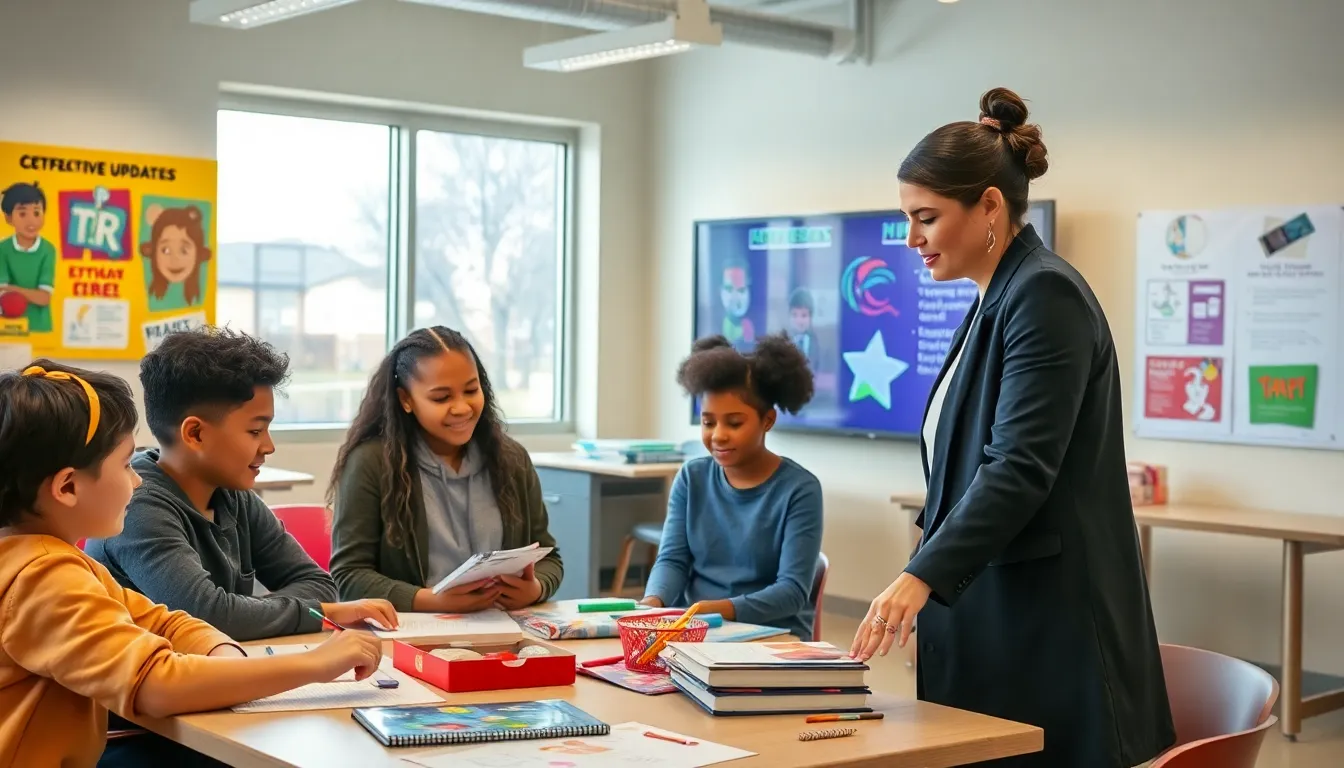When it comes to the future of education, some schools follow traditional paths while others venture into more innovative options. Enter the world of Alternative Education Academies in Ohio, where learning isn’t just about textbooks, but about tailoring education to fit each student’s unique needs. Imagine a place where your child can thrive, often learning more effectively than they do in standard classroom settings. If you’re looking for a fresh perspective on education, this article is your invite into the vibrant world of alternative education, and we promise it’s more fun than deciphering abstract algebra.
Table of Contents
ToggleUnderstanding Alternative Education

What Is Alternative Education?
Alternative education refers to non-traditional teaching methods designed to meet diverse learning styles and personal needs. Unlike conventional educational systems, which usually adhere strictly to standardized testing and a one-size-fits-all curriculum, alternative education encourages creativity, critical thinking, and a holistic approach to learning. It’s an umbrella term encompassing various models, including Montessori, Waldorf, and experiential education, which prioritize student engagement and real-world experiences.
Benefits of Alternative Education
There are numerous perks to this unconventional educational journey. First, alternative education often promotes individualized learning. Students can learn at their own pace, ensuring they grasp concepts thoroughly before moving forward. This method tends to foster greater academic motivation, students who feel empowered to shape their own learning are more likely to engage deeply.
Also, alternative education often places a significant emphasis on social-emotional learning. By prioritizing skills such as collaboration and conflict resolution, these programs better prepare students for real-life interactions. Families often report higher satisfaction levels when opting for alternative education, as it aligns with their educational philosophies and values.
Key Features of Alternative Education Programs
Types of Alternative Education Approaches
Various approaches to alternative education exist, each with its unique characteristics. For example, Montessori schools focus on student-led learning environments that encourage exploration and independence. Waldorf education emphasizes artistic expression and hands-on activities integrated with academic learning. Experiential education, on the other hand, prioritizes learning through direct experience, often including field trips and practical projects that resonate with students’ interests.
How Alternative Education Differs from Traditional Education
In contrast to traditional education, which often emphasizes standardized testing and rigid curricula, alternative education aims to engage students on their terms. Classes are often smaller, allowing for more personalization, and the materials used can be far more diverse, from nature-based learning to technology-driven platforms. Besides, the evaluation methods differ significantly: instead of grades, many alternative systems prioritize assessments that reflect a student’s individual growth and understanding.
Overview of Alternative Education Academies in Ohio
Notable Alternative Education Academies in Ohio
Ohio is home to several noteworthy alternative education institutions catering to diverse learner needs. For instance, the Ohio Virtual Academy offers a tuition-free online education option for students who may thrive better outside a traditional classroom. The Child Montessori School in Cincinnati serves those who benefit from a hands-on approach. Likewise, schools like the Buckeye Community Hope Foundation provide a framework for unique educational experiences designed specifically for students with specific needs.
Curriculum and Educational Approaches
The curriculum at alternative education academies in Ohio often deviates from the state standards through innovative programming. Many schools emphasize project-based learning that allows students to explore subjects deeply. For instance, a science project might combine environmental studies with art, encouraging creativity while grounding students in core knowledge. These academies often integrate technology into their curricula, leveraging online resources and collaborative projects to cater to modern learners.
Enrollment Process and Requirements
How to Choose the Right Academy for Your Child
Selecting the right alternative education academy is essential. Parents should focus on assessing the academy’s philosophy to ensure it aligns with their educational beliefs. Many factors can influence this choice: does the approach resonate with the child’s learning style? Consider visiting multiple academies to observe classes and interview teachers. Would the learning environment motivate your child? This hands-on exploration can help determine the best fit.
Factors to Consider When Selecting an Academy
Besides the educational philosophy, several logistical factors come into play. Look into the faculty qualifications, are the teachers experienced in alternative education methodologies? Also, consider the school’s support services, extracurricular activities, and overall culture. The proximity of the academy can influence accessibility, ensure it’s reachable for your daily commute.
Resources for Parents and Students
Support Networks for Alternative Education
Parents navigating the world of alternative education in Ohio can find valuable support networks. Organizations like the National Coalition of Alternative Education and local community groups offer resources for parents seeking guidance. Connecting with fellow parents, sharing experiences, and exchanging recommendations can provide insight into the intricacies and nuances of different programs. Online communities also serve as a helpful platform for discussion and advocacy.
Funding and Financial Aid Options
While alternative education can be remarkably beneficial, funding can pose a challenge for many families. Thankfully, there are various options available. Ohio, like many states, offers scholarships and tuition reimbursement options for eligible students in alternative programs. Researching local grants and private scholarship opportunities can further ease financial burdens. Families should also inquire directly with schools about available financial aid to explore all possible avenues.



